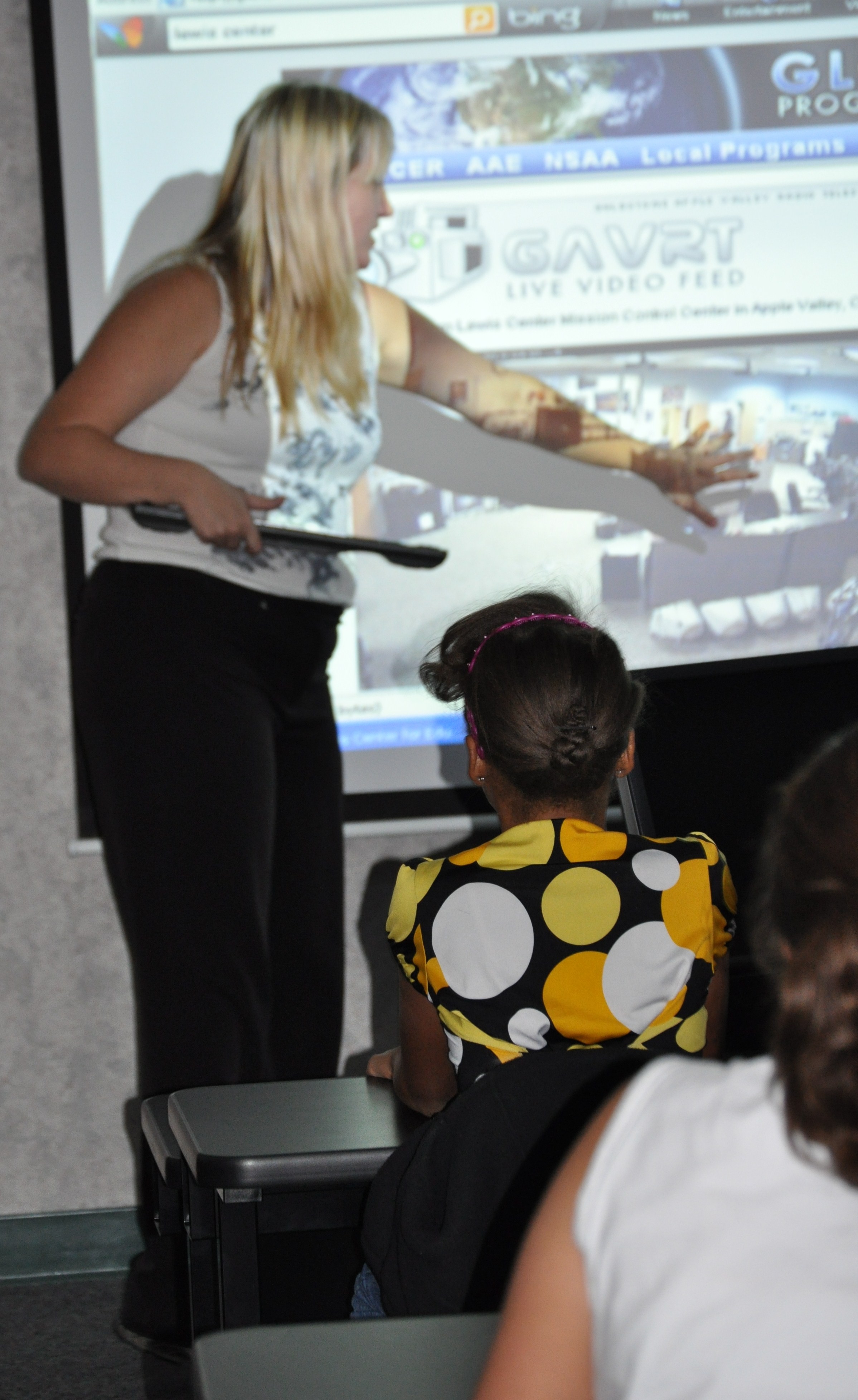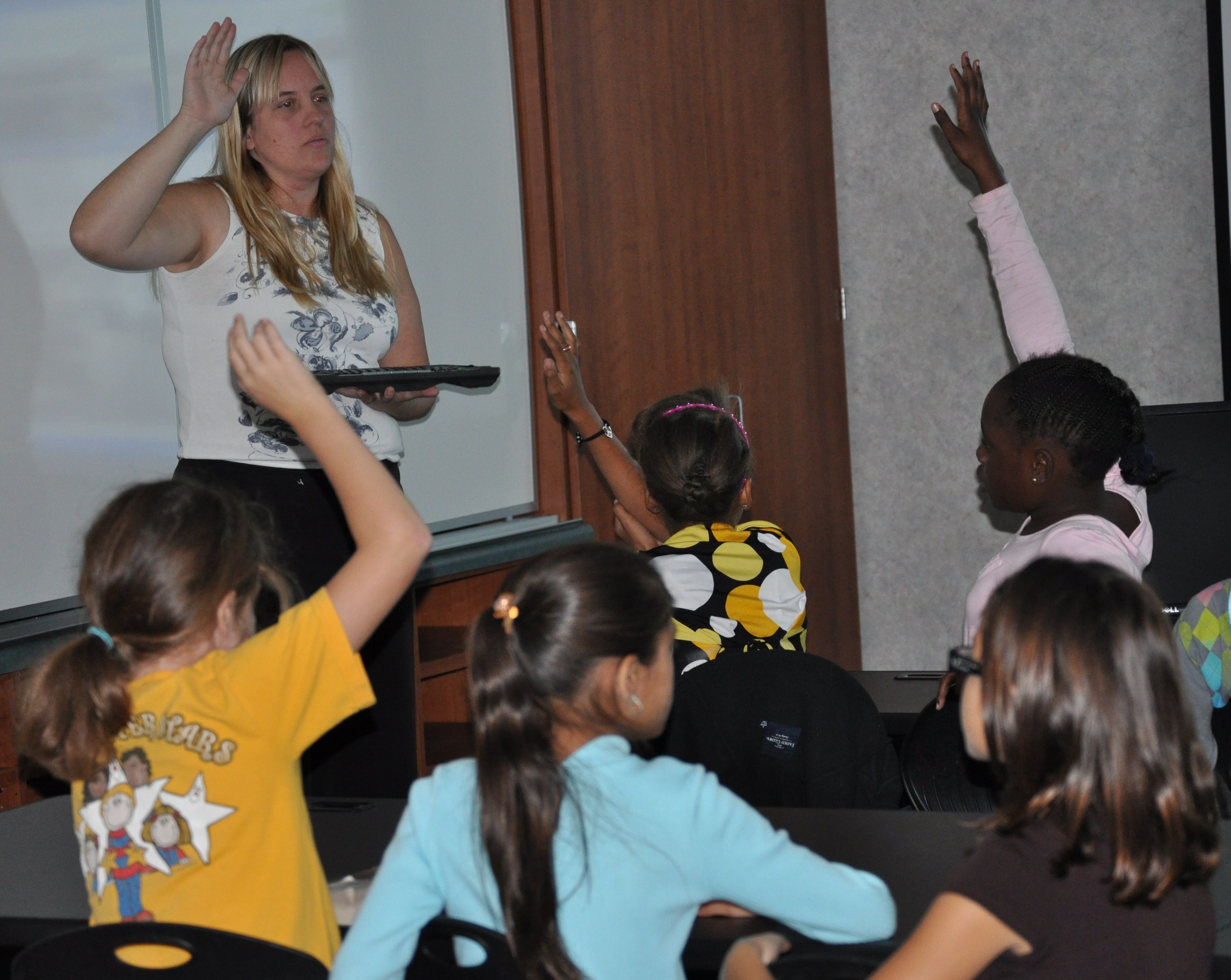FORT IRWIN, Calif.- During their preschool days, Tiefort View Intermediate School fifth-graders Kayla Hensley, Hannah Kaczor and J.M. Malana sang, "Twinkle, twinkle little star. How I wonder what you are."
Last year as fourth-graders at TVIS, the trio not only discovered the composition of stars but the moon as well as they participated in the LCROSS mission, which revealed more about the lunar make-up to NASA scientists through the Lewis Center for Education Research (LCER) program. The program enables students at TVIS to operate and control a deep space radio telescope as part of the Goldstone Apple Valley Radio Telescope program.
"I was expecting it to go more outward instead of just making a dent," Kaczor said with a slight bit of disappointment showing on her face.
However, that slight brush of disappointment did little to dampen her enthusiasm for scientific learning as Kaczor explained how she spent her summer researching more about the planets and deep space.
When asked what advice she has for this year's fourth-grade class, which started their exploration into Deep Space through the GAVRT program, "I would tell them to go and do research about the planets before you go in," Kaczor said.
Malana and Hensley agreed with their classmate's words of wisdom as TVIS fourth-grade teacher Kristen Scarberry listened and reflected on the impact the program has not only on students' interest in science but in the basics of reading, writing and math.
"I have a couple of students who shy away from writing assignments, but when it comes to this, they jump at it," she said, adding that students are often given research assignments ahead of each week's lesson in the GAVRT classroom.
During Tuesday morning's introduction to the program, one student struggled to read the introductory summary, Scarberry noted, "He never gave up, he never quit."
While controlling and operating the deep space telescopes is a major attraction of the program, it encompasses much more than that, Scarberry said.
The GAVRT classroom is equipped with a smart board, which allows students to embark on an interactive journey through the solar system and view the planets from a variety of angles as well as other major elements of the galaxy, she said, adding that the classroom has free DirecTV enabling students to watch shuttle launches and the NASA channel.
Unlike similar programs at other schools, which only allow three or four students at a time to participate in the learning process, every student at TVIS is actively engaged in the science activity of the day, she said.
"Students are broken into groups of six and when the Lewis Center asks for answers, they have to be able to give them," Scarberry said, explaining that each group of students is given different things to search for in each sector being viewed by the telescope.




Social Sharing